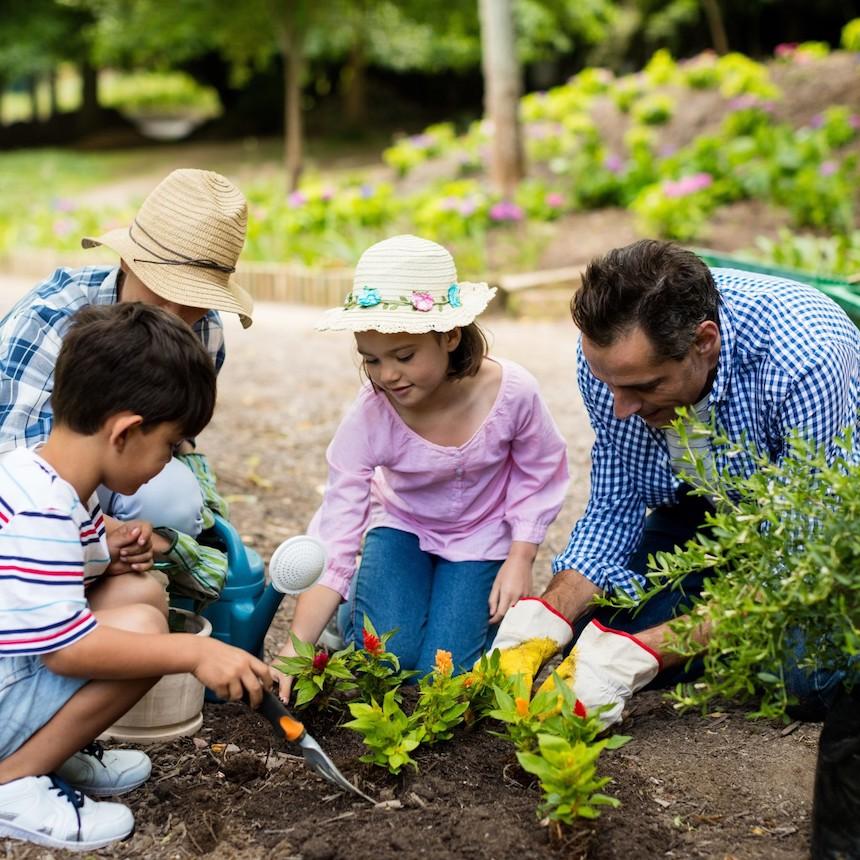The Comprehensive Overview to Horticulture: Discover the Benefits of Different Styles and Techniques
Gardening encompasses a varied range of designs and strategies, each offering special benefits customized to private preferences and ecological contexts. As we check out these different styles, it ends up being obvious that the options made can considerably influence both the yard's health and wellness and its contribution to the surrounding setting.
Comprehending Horticulture Fundamentals
Recognizing the basics of gardening is crucial for cultivating a prospering and lasting yard. A successful gardening venture starts with a strong structure of understanding regarding dirt, plant choice, and environment factors to consider.
Picking the right plants is equally essential. Comprehending their certain demands-- such as sunlight, water, and spacing-- guarantees compatibility with the regional environment and dirt problems. This selection process ought to additionally consider the growth routines and lifecycle of plants, allowing for a well balanced and aesthetically pleasing yard.
In addition, efficient sprinkling techniques are critical. Over-watering and under-watering can both lead to plant anxiety and condition. Implementing a schedule based upon seasonal adjustments and plant needs can boost water effectiveness.
Popular Gardening Styles
What defines the significance of preferred gardening styles? These styles envelop diverse aesthetic principles, practical demands, and ecological factors to consider, eventually reflecting the gardener's individual vision. Amongst the most popular styles is the cottage yard, defined by its informal layout and a vivid variety of flowers and vegetables. This strategy highlights a harmonious blend of shade and appearance, producing an inviting atmosphere.
Conversely, the official garden personifies balance and order, frequently including geometric patterns and thoroughly trimmed bushes. This style connects sophistication and sophistication, with carefully picked plants that strengthen a structured visual.
The Japanese garden uses a peaceful and introspective experience, using natural environments like water, stones, and plants to develop a relaxing environment. It concentrates on simplicity and balance, urging consideration.
In addition, xeriscaping has gained appeal, particularly in deserts (Gardening). It prioritizes drought-resistant plants and reliable water use, advertising sustainability while boosting landscape charm
Advantages of Container Gardening
Container horticulture provides a wide range of advantages that make it an appealing option for both beginner and knowledgeable gardeners alike. Among the main benefits is versatility; containers can be put in numerous areas, allowing gardeners to enhance sunshine direct exposure and develop visually appealing arrangements. This versatility makes it feasible to yard in rooms where traditional in-ground gardening may not be Continue possible, such as terraces, outdoor patios, or metropolitan atmospheres.
In addition, container horticulture gives far better control over dirt conditions. Gardeners can personalize the soil mix to suit certain plants, making certain optimal drainage and nutrient availability. This is specifically advantageous for individuals living in areas with poor or contaminated dirt.
Another substantial benefit is the reduced danger of insects and diseases. Container plants can be checked much more quickly, and any concerns can be resolved immediately. This technique can lessen the spread of intrusive species.
Sustainable Gardening Practices
Sustainable horticulture methods are important for advertising ecological health and wellness and boosting biodiversity in our ecosystems. These practices prioritize environmental equilibrium, resource preservation, and making use of natural approaches to reduce adverse environmental impacts. By utilizing strategies such as composting, gardeners can minimize waste while improving dirt health, consequently cultivating a thriving garden ecological community.
Water conservation is another important facet of lasting horticulture. Strategies such as rain harvesting, drip irrigation, and making use of drought-resistant plants can dramatically reduce water usage while guaranteeing that plants get appropriate dampness. In addition, integrating native plant species into garden styles supports regional wild animals and lowers the demand for chemical plant foods and chemicals, which can be hazardous to the atmosphere.
:max_bytes(150000):strip_icc()/garden-glossary-potting-getty-0623-ecf762deed2a43bca2a90183cb03da31.jpg)
Eventually, lasting horticulture practices not only add to much healthier yards but likewise promote an even more resistant environment, offering long-term benefits to both the gardener and the surrounding neighborhood.
Tips for Effective Horticulture
To grow a growing garden, gardeners need to focus on cautious preparation and thoughtful implementation of their horticulture approaches. Begin by assessing the local climate and soil here conditions, as these variables significantly influence plant choice and development. Pick plants that are fit to your atmosphere, taking into consideration native types that will certainly thrive with very little intervention.
Applying a well-structured format is critical (Gardening). Utilize buddy growing strategies to promote biodiversity and natural bug control, while making certain each plant has appropriate area for development. This not just enhances aesthetics however additionally improves overall plant health and wellness
Normal maintenance is essential to a successful garden. Establish a constant timetable for watering, weeding, and feeding. Mulching can assist maintain wetness and suppress weeds, while additionally including organic matter to the soil.
Frequently keeping track of plant wellness and growth will certainly allow for timely treatments. Be open to learning and adjusting; gardening is a constant procedure that benefits from experience and trial check this and error.
Final Thought


In summary, the exploration of varied gardening styles and strategies exposes their diverse benefits, adding to both visual charm and ecological wellness. Container horticulture uses versatility and availability, while sustainable practices improve environmental stewardship. By integrating numerous strategies and methods, gardeners can maximize their efforts, promote biodiversity, and create practical outdoor spaces. Ultimately, this extensive guide offers as a valuable resource for cultivating successful gardening experiences, cultivating a much deeper link with nature and the bordering ecological community.